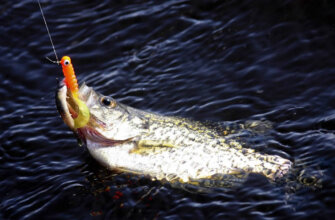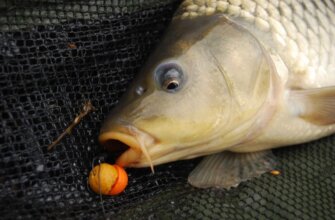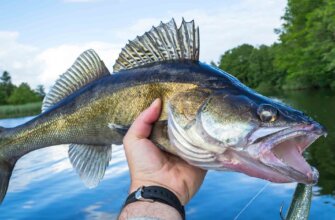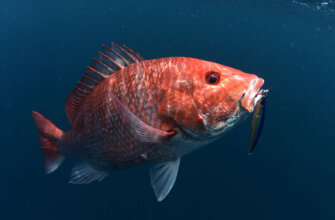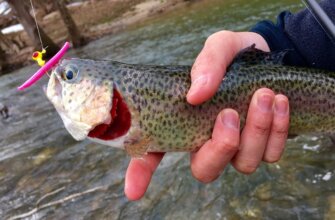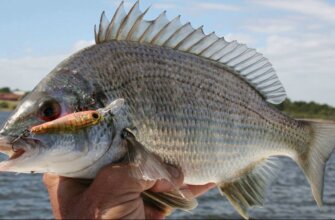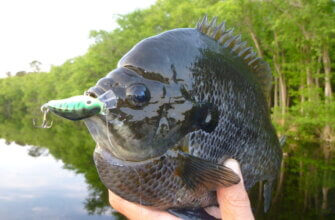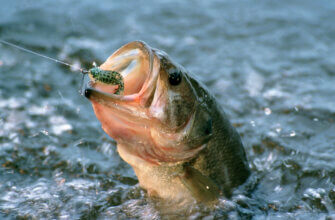Catfish fishing is a popular angling activity that involves specifically targeting catfish species for sport or food. Catfish are known for their size, strength, and often aggressive behavior, making them an exciting fish to catch.
Different techniques can be employed to catch catfish, including:
- Bottom Fishing: This involves casting or dropping bait to the bottom of the waterbody, where catfish typically feed. Use a weight to keep the bait stationary or use a slip-sinker rig that allows the catfish to take the bait without feeling resistance.
- Drift Fishing: This technique involves allowing the bait to drift naturally with the current, covering a larger area. A popular method is to use a three-way swivel rig with a weight on one end, the main line on the second, and the leader with bait on the third.
- Jug Fishing: This method uses floating jugs or buoys attached to lines with baited hooks. The jugs are set adrift, and when a catfish takes the bait, the jug will move, indicating a bite. This technique is often used in lakes and reservoirs.
10 best catfish rigs
Here are 10 popular and effective catfish rigs that anglers often use:
- Carolina Rig. This rig allows the bait to move freely while keeping the weight on the bottom, making it a versatile choice for various catfish species.
- Slip Sinker Rig. A simple and widely used rig where the sinker slides on the mainline, allowing the catfish to take the bait without feeling resistance.
- Three-Way Rig. Particularly useful in current or drift fishing situations, with one line holding the weight and the other presenting the bait.
- Santee Cooper Rig. Designed for targeting catfish in lakes or reservoirs, this rig suspends the bait off the bottom, attracting catfish that feed higher in the water column.
- Trotline. A long line with multiple hooks, set across a body of water, often used for passive catfish fishing.
- Bank Line Rig. Similar to the trotline, this rig involves a line anchored to the bank with multiple hooks attached, allowing anglers to cover a larger area.
- Float Rig. Also known as a slip bobber rig, it suspends the bait at a specific depth using a float, making it effective for targeting suspended or actively feeding catfish.
- Chicken Rig. This rig utilizes chicken livers as bait, often secured in a bait bag or pantyhose to prevent it from falling off the hook.
- Punch Bait Rig. Specifically designed for dip or punch baits, this rig employs a treble hook covered in a sticky bait substance that catfish readily bite onto.
- Jug Fishing Rig. A fun and passive method that uses floating jugs or buoys with baited lines attached, allowing the jugs to drift and indicate a bite when they move.
Carolina Rig

The Carolina rig is a popular fishing technique used for targeting catfish. It consists of a few key components and allows anglers to present their bait in a way that entices catfish to bite. Here is a description of the Carolina rig without providing a list:
The Carolina rig is a versatile fishing setup that consists of a few essential components. It typically begins with a fishing line, which can be monofilament or braided, attached to the main fishing rod. A barrel swivel is then tied onto the end of the line, acting as a connection point between the line and the leader.
The leader is a separate length of line that is typically shorter than the main line. It is often made of monofilament or fluorocarbon, which provides some invisibility to the fish. At the end of the leader, a hook is tied using a suitable knot. The size and type of hook can vary depending on the target catfish species and the size of the bait being used.
Above the barrel swivel, a slip sinker or egg sinker is threaded onto the main line. The weight of the sinker can vary depending on the conditions and the depth at which you want to fish. The sinker allows the bait to sink to the desired depth while keeping the line in tension.
To assemble the Carolina rig, the hook with the bait is attached to the leader, while the sinker slides freely on the main line above the swivel. This design allows the bait to move naturally, even when the fish picks it up, as the sinker does not inhibit its movement. The swivel serves as a stopper to prevent the sinker from sliding all the way down to the hook.
When fishing with the Carolina rig, cast the rig into your desired fishing spot and let it sink to the bottom. Then, slowly retrieve the line, dragging the bait across the bottom and periodically pausing to let it settle. This presentation imitates a natural foraging behavior and can entice catfish to strike.
| Advantages | Disadvantages |
| Realistic Action: The ThunderStick features a tight wiggling action that closely mimics the movement of a distressed baitfish. This realistic action can attract the attention of bass and trigger aggressive strikes. Vibrant Color Patterns: The ThunderStick is available in a wide range of vibrant color patterns that imitate various baitfish species. This allows anglers to match the hatch or choose colors that are highly visible in different water and light conditions. Durable Construction: The ThunderStick is built with durable materials, including strong hooks, tough split rings, and a sturdy body construction. This ensures that the lure can withstand the aggressive strikes and rugged fishing conditions associated with bass fishing. Versatile Retrieve: The ThunderStick can be retrieved in multiple ways to imitate different types of baitfish action. It can be twitched, jerked, or retrieved steadily, allowing anglers to experiment and find the most effective presentation for the given fishing conditions. Effective in Different Depths: The ThunderStick is designed to run at various depths depending on the model. This versatility allows anglers to target bass in both shallow and deeper water, making it suitable for different fishing scenarios. | Complexity: The Carolina Rig setup requires multiple components, including a leader, bead, swivel, weight, and hook. Setting up the rig correctly may be more complex and time-consuming compared to other fishing setups. Limited Casting Distance: The weight used in the Carolina Rig can limit casting distance, particularly when targeting larger catfish or when fishing in strong currents. Anglers may need to adjust their casting techniques or use heavier weights to overcome this limitation. Sensitive to Snags: While the leader can help reduce snags, the exposed hook can still get caught in underwater vegetation or structures. Anglers need to be mindful of their surroundings and retrieve speed to minimize snagging risks. Reduced Lure Action: When using artificial baits, the weight and leader can affect the natural action of the lure, reducing its effectiveness in attracting catfish. This is a potential disadvantage when compared to techniques that allow for more direct manipulation of the lure. |
Slip Sinker Rig

The Slip Sinker Rig is a popular setup used by anglers targeting catfish. It consists of several components that work together to effectively present bait and catch catfish. Here’s a description of the slip sinker rig without listing the items:
The Slip Sinker Rig is a versatile fishing rig used for catfish. It typically involves a main fishing line, a Sliding Sinker, a barrel swivel, a leader line, and a hook. The rig allows the sinker to slide freely along the main line, giving catfish the freedom to take the bait without feeling any resistance.
To set up the Slip Sinker Rig, you first tie the main fishing line to one end of a barrel swivel. The barrel swivel acts as a stopper to prevent the sliding sinker from moving up the line. On the other end of the barrel swivel, you attach a leader line of sufficient length. The leader line is usually shorter and stronger than the main line, as it directly connects to the hook and bears the weight of the catfish when hooked.
At the end of the leader line, you tie a suitable catfish hook. The hook size may vary depending on the target catfish species and the size of the bait you plan to use. The bait can be anything from live or cut baitfish to chicken livers or stink baits, which are known to attract catfish.
To complete the rig, you thread a Sliding Sinker onto the main line before attaching it to the barrel swivel. The Sliding Sinker can be a cylindrical weight with a hole in the center or a specially designed sliding sinker. The weight of the sinker depends on the fishing conditions and the depth at which you plan to fish. The sinker’s purpose is to provide casting weight and help keep the baited hook on or near the bottom where catfish tend to feed.
Once the rig is assembled, you can cast it into your desired fishing location. As the rig settles on the bottom, the sliding sinker allows the catfish to take the bait without feeling any resistance from the weight. When a catfish bites, you’ll feel a subtle tug or movement on the fishing line. At this point, you can set the hook by reeling in and applying a firm hookset.
| Advantages | Disadvantages |
| Versatility: The Slip Sinker Rig can be used with various bait options, including live bait, cut bait, or prepared baits. This versatility allows anglers to adapt to different catfish feeding preferences and fishing conditions. Natural Presentation: The rig allows the bait to move naturally with the current or when retrieved, mimicking the behavior of prey. This natural presentation increases its attractiveness to catfish and improves the chances of getting a bite. Sensitive Bite Detection: The use of a slip sinker and a swivel above the hook allows for excellent bite detection. Catfish can pick up the bait without feeling resistance, providing anglers with a better chance of detecting even the slightest nibble. Reduced Snagging: The mainline and sinker are free to slide through the swivel, minimizing the chances of the rig getting snagged on underwater structures. This allows anglers to fish in areas with potential snags, such as rocky bottoms or submerged trees. Easy Bait Adjustments: The slip sinker can be easily adjusted up or down the line to change the bait’s depth and position. This adaptability is beneficial when targeting catfish at different water depths or when trying to find their feeding zone. | Complexity: The Slip Sinker Rig requires multiple components, including a mainline, slip sinker, bead, swivel, leader, and hook. Setting up the rig correctly may be more complex and time-consuming compared to other fishing setups. Reduced Casting Distance: The use of a sinker on the line can limit casting distance, especially when targeting larger catfish or when fishing in strong currents. Anglers may need to adjust their casting techniques or use heavier sinkers to achieve desired casting distance. Sensitive to Snags: Although the sinker slides freely on the line, the exposed hook can still get caught in underwater vegetation or structures. Anglers need to be mindful of their surroundings and retrieve speed to minimize snagging risks. Limited Lure Action: The use of artificial lures with the Slip Sinker Rig may result in reduced lure action. The weight of the sinker and the leader can affect the natural movement of the lure, potentially making it less attractive to catfish. |
Three-Way Rig

A Three-Way Rig for catfish is a popular setup used by anglers to target catfish in various fishing environments. It involves using a three-way swivel and multiple leader lines to present bait effectively and increase the chances of a successful catch. Here’s a brief description of the rig without listing:
The Three-Way Rig consists of three main components: a mainline, a Three-Way swivel, and two leader lines. The mainline is typically a sturdy fishing line that connects the rig to the fishing rod. It should be strong enough to handle the weight and fight of a catfish.
The Three-Way swivel is a specialized swivel with three openings. One end of the swivel is connected to the mainline, while the other two openings are used to attach the leader lines. The swivel allows the bait to move freely while preventing line twists.
Each leader line is tied to one of the remaining openings on the Three-Way swivel. These leader lines are typically shorter than the mainline and are made from a slightly lighter fishing line. The length of the leader lines can vary based on personal preference and fishing conditions.
At the end of each leader line, a separate bait or lure is attached. Common catfish baits include live or dead baitfish, chicken livers, stink baits, or specially designed catfish baits. The choice of bait depends on the angler’s preference and the type of catfish being targeted.
When fishing with a Three-Way Rig, the mainline is cast into the water, allowing the baited leader lines to sink to the desired depth. The Three-Way swivel helps keep the bait near the bottom, where catfish are known to feed. The setup allows for natural presentation and increased sensitivity, as the angler can detect subtle bites from catfish.
| Advantages | Disadvantages |
| Versatility: The Three-Way Rig can be used with various bait options, including live bait, cut bait, or prepared baits. This versatility allows anglers to adapt to different catfish feeding preferences and fishing conditions. Natural Presentation: The rig allows the bait to move naturally with the current, mimicking the behavior of prey. This natural presentation increases its attractiveness to catfish and improves the chances of getting a bite. Multiple Bait Placement: The rig allows for the use of multiple baits or attractants simultaneously. Anglers can attach different baits to the dropper lines, increasing the chances of enticing catfish by offering a variety of smells and tastes. Sensitive Bite Detection: The use of a three-way swivel allows for excellent bite detection. When a catfish bites, the line tension is transferred directly to the angler, providing a noticeable and immediate indication of a bite. Reduced Snagging: The three-way swivel setup allows the mainline and the dropper lines to move independently. This reduces the risk of the rig getting snagged on underwater structures, allowing anglers to fish in areas with potential snags more confidently. | Complexity: The Three-Way Rig requires multiple components, including a mainline, three-way swivel, dropper lines, and hooks. Setting up the rig correctly may be more complex and time-consuming compared to other fishing setups. Reduced Casting Distance: The use of multiple dropper lines and baits can create more drag, affecting casting distance, especially when targeting larger catfish or when fishing in strong currents. Anglers may need to adjust their casting techniques or use heavier sinkers to achieve desired casting distance. Increased Tangles: With multiple lines and baits, there is an increased risk of tangling during casting or retrieving. Careful attention is needed to prevent tangles and maintain a manageable rig. Limited Maneuverability: The additional lines and components can reduce the maneuverability of the rig, making it less suitable for fishing in dense vegetation or structures. Sensitive to Snags: Although the rig reduces the risk of snagging compared to some other setups, the exposed hooks on the dropper lines can still get caught in underwater vegetation or structures. Anglers need to be mindful of their surroundings and retrieve speed to minimize snagging risks. |
Santee Cooper Rig

The Santee Cooper Rig is a popular fishing setup used specifically for catfish angling. It consists of a few essential components that work together to target catfish effectively. Although I won’t provide a direct list, I can describe the main elements of the rig for you.
The Santee Cooper Rig typically incorporates a heavy-duty fishing rod and reel combo, capable of handling the weight and power of catfish. The rod should have a medium to heavy power rating to ensure it can withstand the fighting strength of these fish.
At the terminal end of the line, a slip sinker is used to provide weight and anchor the rig. This sinker slides freely along the main line, allowing catfish to take the bait without feeling resistance. The weight of the sinker depends on factors such as water current and bait size, but it is generally on the heavier side to keep the rig stable in the water.
Above the slip sinker, a swivel is attached to prevent the line from twisting during retrieval. This is important as catfish can put up a strong fight, and twisted line can result in tangles or breakage.
A leader line is connected to the opposite end of the swivel. The length of the leader can vary depending on fishing conditions, but it’s typically around 12 to 36 inches long. The leader is made of a sturdy and abrasion-resistant material to withstand the sharp teeth and rough mouths of catfish.
Finally, a circle hook is attached to the end of the leader. Circle hooks are commonly used for catfish as they have a higher hook-up ratio and tend to hook the fish in the corner of the mouth, reducing the risk of deep hooking.
| Advantages | Disadvantages |
| Versatility: The Santee Cooper rig is a versatile setup that can be used in various fishing conditions, including rivers, lakes, and reservoirs. It allows you to cover different water depths and adapt to different catfish feeding habits. Sensitivity: Since the weight slides freely on the mainline, the rig offers good sensitivity. When a catfish takes the bait and starts moving, you’ll feel the movement transmitted through the line more effectively compared to other rig setups. Reduced Snags: The sliding weight design of the Santee Cooper rig helps reduce the likelihood of getting snagged on the bottom. The weight moves freely, allowing it to glide over obstacles and minimizing the chances of getting caught on underwater structures. Easy to Set Up: The rig is relatively easy to set up and doesn’t require complex rigging techniques. It consists of a few basic components, making it accessible for beginners and experienced anglers alike. | Complexity for Beginners: Although it’s considered relatively simple to set up, beginners may find it slightly more complex compared to other basic rig setups. The sliding weight and leader line require proper adjustments and knot tying, which might take some practice to get right. Limited Casting Distance: The Santee Cooper rig can be less effective for long-distance casting compared to some other rig setups. The sliding weight and the nature of the rig can create some drag, reducing the overall casting distance. Tangling Issues: If not properly managed, the sliding weight and leader line can sometimes tangle during casting or retrieval, resulting in frustrating situations. Anglers need to be cautious and ensure the rig is properly aligned and untangled before casting. Reduced Bait Presentation: The sliding weight can sometimes interfere with the presentation of live bait or soft baits, making them less appealing to catfish. This can affect the overall effectiveness of the rig in enticing catfish to bite. |
Trotline
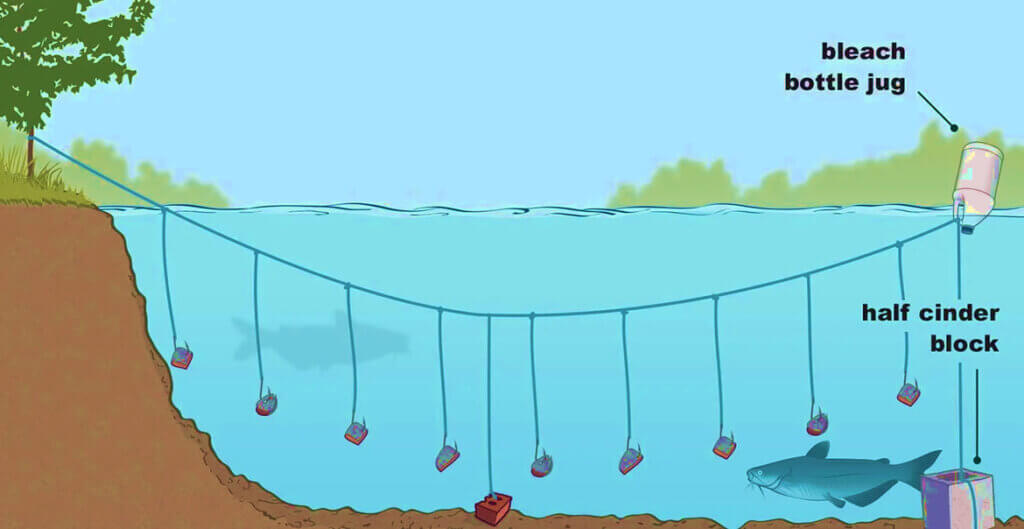
A Trotline is a popular fishing technique used for catching catfish. It involves suspending a long line across a body of water, usually a river or lake, with multiple baited hooks attached at intervals. The line is anchored at both ends to keep it in place.
Trotlines can vary in length and are typically made of a durable material like nylon or braided fishing line. The line is strong enough to withstand the weight and pull of catfish.
The hooks used on a trotline are spaced apart to cover a wide area of the water, increasing the chances of hooking a catfish. Bait, such as live or cut baitfish, chicken liver, or stink bait, is attached to each hook to attract the catfish.
Once the Еrotline is set, it is left in the water for a period of time, allowing the bait to entice the catfish. Fishermen usually check the trotline periodically to see if any catfish have taken the bait and been caught on the hooks.
When a catfish is caught, it can be pulled in by hand or using a fishing rod and reel. Care must be taken while retrieving the catfish to avoid injury from their sharp spines.
Trotlines are commonly used by anglers targeting larger catfish species, as they offer a passive fishing method that can cover a larger area than traditional rod and reel fishing. It is important to follow local fishing regulations and guidelines when using trotlines to ensure sustainable fishing practices.
| Advantages | Disadvantages |
| Multiple Hook Capacity: One of the significant advantages of a trotline is its ability to accommodate multiple hooks along its length. This increases the chances of catching multiple catfish simultaneously, increasing your overall catch rate. Passive Fishing: Once a trotline is set up and anchored, it requires minimal active involvement from the angler. This allows you to engage in other activities or fish with other methods simultaneously, making it a convenient option for anglers who prefer a more passive approach. Coverage of Large Area: With the extended length of a trotline, you can cover a large area of water. This is especially advantageous when targeting catfish in expansive bodies of water such as rivers, lakes, or reservoirs. It increases the likelihood of encountering catfish as they move along their feeding patterns. Suitable for Night Fishing: Trotlines are commonly used for night fishing, as they can be set up before dark and left unattended throughout the night. Catfish are more active during the nighttime, making trotlines an effective method for targeting them during their feeding periods. | Legal Restrictions: The use of trotlines may be regulated or restricted in some areas. It’s important to familiarize yourself with local fishing regulations and obtain any required permits or licenses before using a trotline. Increased Risk of Snags and Tangles: The long length of a trotline increases the risk of snags and tangles, especially if there are submerged structures or vegetation in the water. Untangling a trotline or freeing it from snags can be time-consuming and frustrating. Reduced Mobility: Once a trotline is set up, it limits your mobility as an angler. You cannot easily move from one spot to another, unlike more mobile fishing methods such as rod and reel. This may restrict your ability to adjust to changing fishing conditions or actively pursue catfish in specific areas. Limited Control over Bait Presentation: With a trotline, you have less control over the presentation of the bait compared to other methods such as rod and reel fishing. The bait is stationary, and the catfish must swim to it, potentially reducing the effectiveness of enticing strikes. |
Bank Line Rig

The Bank Line Rig is a popular fishing setup used specifically for targeting catfish. It is known for its simplicity and effectiveness in presenting live or cut bait to entice catfish to bite. The rig consists of a few key components that work together to maximize your chances of success.
Firstly, the Bank Line Rig typically starts with a sturdy fishing rod and reel combo capable of handling the weight and power of catfish. The fishing line used is often a heavy monofilament or braided line with a pound test strength suitable for catfish species commonly found in the area.
The rig utilizes a sliding sinker, also known as a slip sinker or egg sinker, which is threaded onto the main fishing line. The size of the sinker will depend on factors such as the current, water depth, and bait weight. The sinker’s purpose is to provide enough weight to keep the bait near the bottom, where catfish often feed.
A swivel is then attached to the fishing line, above the sinker. The swivel helps prevent line twist and tangling by allowing the line to rotate freely. It also serves as a connection point for the leader line.
The leader line is a separate piece of fishing line, usually lighter in pound test compared to the main line. It is attached to the swivel on one end and the hook on the other. The leader line can vary in length, but it is typically around 12 to 24 inches. The choice of leader line length depends on factors such as water clarity and the catfish’s feeding behavior.
At the end of the leader line, a strong and sharp catfish hook is tied or snelled. The size and style of the hook depend on the bait being used and the size of the catfish being targeted. Circle hooks are a popular choice for catfish, as they have a higher hooking percentage and are less likely to be swallowed deeply by the fish.
Finally, the bait is attached to the hook. Catfish have a strong sense of smell, so common bait options include live or cut baitfish, worms, chicken livers, or stink baits designed specifically for catfish. The bait should be secured firmly to the hook, ensuring it stays in place during casting and while in the water.
When fishing with the Bank Line Rig, anglers typically cast their baited hooks into likely catfish holding areas, such as deep holes, submerged structures, or along the edges of channels and drop-offs. Once the line is cast, the sinker will slide freely along the fishing line until it hits the swivel, allowing the catfish to pick up the bait without feeling the weight of the sinker. When a catfish takes the bait and moves away, the angler will feel the bite and can then set the hook.
| Advantages | Disadvantages |
| Easy and Low-Cost Setup: Setting up a bank line rig is relatively simple and inexpensive. All you need is a heavy line, a leader line, a hook, and a sturdy object on the bank to attach the main line. It doesn’t require specialized equipment or complex rigging techniques, making it accessible for beginners and anglers on a budget. Passive Fishing: Similar to the trotline, the bank line rig allows for passive fishing. Once the rig is set up and secured, you can leave it unattended while you engage in other activities or fish with other methods. This makes it convenient for anglers who prefer a more relaxed approach to fishing. Coverage of a Specific Area: A bank line rig is particularly effective for targeting catfish in a specific area. By selecting a strategic location along the bank, such as near structures or deeper holes, you can concentrate your efforts and increase your chances of intercepting catfish as they move along their feeding patterns. Suitable for Night Fishing: Bank line rigs are commonly used for night fishing, as they can be set up before dark and left unattended throughout the night. Catfish are more active during nighttime, making bank line rigs an effective method for targeting them during their feeding periods. | Limited Coverage: Unlike trotlines or fishing from a boat, a bank line rig limits your coverage to the immediate area surrounding the rig. You won’t be able to cover large distances or explore different sections of the water body as easily. This can reduce your chances of encountering catfish in other productive areas. Reduced Mobility: Once a bank line rig is set up, it restricts your mobility as an angler. You are confined to the area near the rig and may have limited flexibility in adjusting to changing fishing conditions or actively pursuing catfish in different spots. Limited Bait Presentation Control: With a bank line rig, you have less control over the presentation of the bait compared to methods like rod and reel fishing. The bait is stationary, and the catfish must swim to it. This may limit your ability to entice strikes and reduce the effectiveness of bait manipulation techniques. Risk of Snags and Line Damage: Depending on the location and underwater structures, there may be an increased risk of the line getting snagged or damaged. Submerged logs, rocks, or vegetation can cause the line to become tangled or break, resulting in lost rigs and potential harm to the fishery. |
Float Rig

A Float Rig for catfish is a fishing setup specifically designed to target catfish species. It consists of several key components that work together to effectively present bait and catch catfish.
The main element of a float rig is the float, also known as a bobber or cork. The float is typically made of buoyant materials such as foam or plastic and is attached to the fishing line. Its purpose is to keep the baited hook and weight suspended at a desired depth in the water column. The size and type of float used can vary depending on the fishing conditions and the size of the catfish being targeted.
Below the float, a leader line is connected to the main fishing line. The leader line is usually made of a heavier monofilament or fluorocarbon line to withstand the strong jaws and sharp teeth of catfish. It also helps prevent the catfish from biting through the line.
At the end of the leader line, a strong and sharp catfish hook is attached. The size of the hook will depend on the size of the catfish being targeted and the type of bait being used. Popular bait choices for catfish include live or cut baitfish, worms, chicken livers, and stink baits.
To provide weight and ensure the bait reaches the desired depth, a sinker or weight is attached to the bottom end of the leader line. The weight can vary in size and shape, but it should be heavy enough to keep the baited hook near the bottom where catfish often feed.
When using a Float Rig for catfish, the angler typically casts the rig into a suitable catfish habitat such as rivers, lakes, or ponds. The float keeps the baited hook and weight suspended at the desired depth, allowing the angler to detect bites and movements. When a catfish takes the bait, the float will usually dip or bob, indicating a strike. At this point, the angler can set the hook and start reeling in the catfish.
It’s important to note that specific setups and components of a float rig may vary based on personal preference, fishing location, and target species. It’s always a good idea to consult local fishing regulations and guidelines to ensure compliance and to consider any additional tackle or gear that may be required.
| Advantages | Disadvantages |
| Bait Suspension: The float rig allows you to suspend the bait at a specific depth in the water column. This can be advantageous when targeting catfish at different depths, as you can adjust the float’s position to present the bait at the desired level. Bite Detection: The float serves as a visual indicator that can help detect bites. When a catfish takes the bait, the float will move, bob, or submerge, alerting you to a potential strike. This makes it easier to detect subtle bites, especially in situations where the fish might be less aggressive. Versatility: Float rigs are versatile and can be used in various fishing environments, including ponds, lakes, and slow-moving rivers. They can be effective for targeting different catfish species, including channel catfish, blue catfish, and flathead catfish. Ease of Use: Float rigs are relatively easy to set up and use, making them suitable for beginners and experienced anglers alike. It typically involves attaching the float, leader line, and hook to the mainline and adjusting the depth based on the target depth of the catfish. | Limited Casting Distance: The use of a float rig can limit your casting distance compared to other rig setups, such as using a sliding weight or a sinker. The presence of the float and leader line can create some drag, reducing the overall casting distance. Restricted Mobility: Once a float rig is cast and set up, it limits your mobility as an angler. You are confined to the area around the rig and may have limited flexibility in exploring different sections of the water body or actively pursuing catfish in other spots. Potential Tangle Risks: The presence of a float and leader line increases the risk of tangles, especially in situations with strong currents or submerged structures. Proper casting technique and attentiveness are required to minimize the likelihood of tangles and maintain the rig’s effectiveness. Limited Bait Presentation Control: Float rigs provide limited control over the presentation of the bait compared to other methods like bottom rigs or jigging. The bait is suspended in a fixed position, and there may be limitations in manipulating the bait to entice strikes or adjust to changing catfish behavior. |
Chicken Rig

A Chicken Rig is a popular fishing rig used for targeting catfish. It is a versatile and effective rig that can be set up in various ways depending on the angler’s preferences and fishing conditions.
The Chicken Rig typically consists of a main line, sinker, leader line, and hooks. The main line is usually a heavy-duty fishing line that can handle the weight of the catfish. The sinker is attached to the main line to provide weight and help the rig sink to the desired depth.
The leader line is attached to the main line using a swivel, which allows for better movement and reduces line twist. The length of the leader line can vary, but it is typically around 1 to 3 feet long. At the end of the leader line, one or more hooks are tied, depending on local regulations and personal preference.
When using the Chicken Rig for catfish, anglers often use cut bait or prepared baits, such as chicken liver, chicken breast, or shrimp, as bait. The bait is typically threaded onto the hooks, ensuring that it is securely attached.
Once the rig is set up, it can be cast into the water near areas where catfish are likely to be found, such as deep holes, submerged structures, or along the edges of underwater vegetation. Anglers may choose to use multiple rods with chicken rigs to increase their chances of catching catfish.
When a catfish takes the bait, anglers typically wait for a bite and then set the hook by quickly reeling in the line or giving a firm tug on the rod. It’s important to have a sturdy fishing rod and reel setup capable of handling the strength and weight of a catfish.
| Advantages | Disadvantages |
| Effective Catfish Attractor: Chicken livers have a strong scent and can be highly attractive to catfish. The strong odor can help lure catfish from a distance and increase your chances of getting bites. Cost-effective Bait: Chicken livers are relatively inexpensive compared to some other bait options. They are readily available in most grocery stores and can be an affordable choice for catfish anglers, especially when compared to live bait or specialized catfish baits. Easy to Obtain and Handle: Chicken livers are easy to obtain from grocery stores or butcher shops. They come pre-packaged and are convenient to handle. You can also prepare them by cutting them into smaller pieces or using them whole, depending on your fishing strategy and the size of the catfish you are targeting. Versatile Bait: Chicken livers can attract a variety of catfish species, including channel catfish, blue catfish, and flathead catfish. They can be effective in different fishing environments such as lakes, rivers, and ponds, making them a versatile bait option for catfish anglers. | Fragility: Chicken livers can be quite fragile and easily come off the hook during casting or when attacked by smaller fish. This can result in lost bait and require frequent re-baiting, which can be time-consuming and frustrating. Non-Selective Bait: While chicken livers are effective in attracting catfish, they can also attract other fish species, including undesirable ones. You may end up catching non-target fish, which can be time-consuming to deal with and may require more effort to release them unharmed. Messy and Smelly: Chicken livers have a strong odor, which can be messy and unpleasant to handle. They can leave a lingering smell on your hands, fishing equipment, and storage containers. Proper handling and storage techniques are necessary to minimize the smell and mess associated with chicken livers. Availability and Preservation: Chicken livers may not be readily available in all locations or during certain seasons. Additionally, they have a relatively short shelf life and can spoil quickly, requiring proper storage and refrigeration to maintain their freshness. |
Punch Bait Rig

A Punch Bait rig for catfish is a type of fishing rig that is designed to attract and catch catfish using a specialized bait called punch bait. The rig typically consists of a few key components without going into a specific list.
Firstly, the Punch Bait rig typically involves a fishing rod and reel setup suitable for catfish fishing. It’s important to use a strong and durable rod and reel combination capable of handling the size and strength of catfish.
Next, the rig will include a fishing line, usually a heavy-duty monofilament or braided line, with an appropriate pound test rating to withstand the weight and fighting power of catfish.
Attached to the fishing line, there will be a sinker or weight to help the bait sink to the desired depth. The size of the sinker will depend on the fishing conditions and the depth you want to fish at.
At the end of the line, there will be a leader, which is a length of line that is typically stronger than the main fishing line. The leader is used to attach the hook and provide added strength and abrasion resistance when fighting large catfish.
The hook used in a punch bait rig is typically a strong and sharp circle hook. Circle hooks are popular for catfish fishing because they tend to hook the fish in the corner of the mouth, reducing the chance of deep hooking and increasing the chances of a successful catch and release.
| Advantages | Disadvantages |
| Strong Scent Attraction: Punch baits are formulated to have a strong and pungent odor that can attract catfish from a distance. The scent disperses through the water, luring catfish to your fishing spot and increasing the chances of getting bites. Easy to Apply: Punch baits are designed to be sticky and adhere well to the hook. This makes them easy to apply and keeps them in place, even when casting or in the presence of water currents. The ease of application saves time and allows for more efficient fishing. Versatile Rigging Options: Punch baits can be used with various rig setups, including single hooks, treble hooks, or dip worms. This versatility allows anglers to experiment and find the rigging style that works best for their fishing conditions and the behavior of the targeted catfish species. Suitable for Multiple Catfish Species: Punch baits can be effective for targeting different catfish species, including channel catfish, blue catfish, and flathead catfish. The strong scent of punch baits is appealing to a wide range of catfish, increasing the chances of success. | Messy Handling: Punch baits are sticky and can be messy to handle. They may leave a residue on your hands, fishing equipment, and storage containers. It’s important to have proper cleanup methods and consider using gloves or other protective measures to minimize the mess. Bait Maintenance: Punch baits can dry out or lose their stickiness if left exposed to the air for extended periods. Proper storage and preservation techniques are necessary to maintain the bait’s freshness and effectiveness. This may involve using airtight containers or reapplying the bait as needed during fishing sessions. Non-Selective Attraction: While punch baits can attract catfish effectively, they may also attract non-target fish species. This can result in catching unwanted fish, requiring extra effort to release them unharmed and potentially disrupting your fishing experience. Limited Casting Distance: Punch baits, especially when using treble hooks or dip worms, can be bulkier and heavier compared to other bait options. This can affect the casting distance, making it more challenging to reach specific spots or cover larger areas of water. |
Jug Fishing Rig

A Jug Fishing Rig for catfish is a simple and effective method for catching these bottom-dwelling fish. The rig consists of a floating device, often a plastic jug or bottle, that is used as a buoy to suspend the baited hook in the water. The jug is attached to the main line, which is typically a sturdy fishing line. The line is then secured to the jug using a knot or a clip, allowing the jug to float freely on the surface.
The baited hook is attached to a leader line, which is connected to the main line using a swivel or a similar device. The leader line is usually made of a durable material, such as monofilament or braided line, and is of sufficient length to reach the desired depth where catfish are known to feed. The bait used on the hook can vary, but common choices include live or cut bait like shad, worms, or chicken liver.
Once the rig is set up, the jug is released into the water, allowing it to drift along with the current or wind. The jug’s movement serves as an indicator when a catfish takes the bait. When a catfish bites, the jug will move erratically or be pulled underwater, signaling that it’s time to reel in the catch.
Jug Fishing Rigs are often used in rivers, lakes, or reservoirs where catfish are abundant. It is important to check local fishing regulations and obtain any necessary permits before engaging in jug fishing. Additionally, proper care should be taken to avoid littering or causing harm to the environment while using this fishing method.
| Advantages | Disadvantages |
| Simplicity and Ease of Use: Jug fishing is a relatively simple and straightforward method. It requires minimal equipment and can be easily understood and utilized by anglers of all experience levels, including beginners. Setting up the rig involves attaching a line, hook, and bait to a floating jug. Versatility and Coverage: Jug fishing allows you to cover a larger area of water compared to other fishing methods. By deploying multiple jugs at varying distances, you can spread out your fishing efforts and increase your chances of encountering catfish. It is particularly useful when fishing from the bank or in areas where other methods are not feasible. Active Fishing: Jug fishing provides an active fishing experience. Unlike passive methods such as trotlines or bank lines, jug fishing requires regularly checking and tending to the jugs. This activity can be enjoyable for anglers who prefer to be actively involved in their fishing pursuits. Visual Bite Detection: When a catfish takes the bait on a jug, the jug will typically move, bob, or submerge, providing a clear visual indication of a bite. This visual bite detection can be exciting and add an element of anticipation to the fishing experience. | Limited Control: One of the main disadvantages of jug fishing is the limited control over the presentation of the bait. The bait is suspended under the jug, and the movement of the jug is primarily dictated by the fish. This can reduce the ability to manipulate the bait and potentially limit its effectiveness in enticing strikes. Risk of Tangling: When deploying multiple jugs, there is a risk of lines tangling with each other, especially if there are strong currents or if the jugs drift close together. Untangling tangled lines can be time-consuming and frustrating, and it may also result in lost jugs or fish. Potential Loss of Gear: Jugs used in jug fishing are susceptible to being lost or drifting away due to wind, strong currents, or boat traffic. This can lead to the loss of gear and potential environmental pollution if the jugs are not properly retrieved. Safety Considerations: Jug fishing involves deploying floating jugs in the water, which can pose safety risks. Jugs can be hazardous to boats, swimmers, or other water activities if they are not clearly marked or properly managed. It is important to ensure proper visibility and take necessary precautions to prevent accidents or collisions. |

